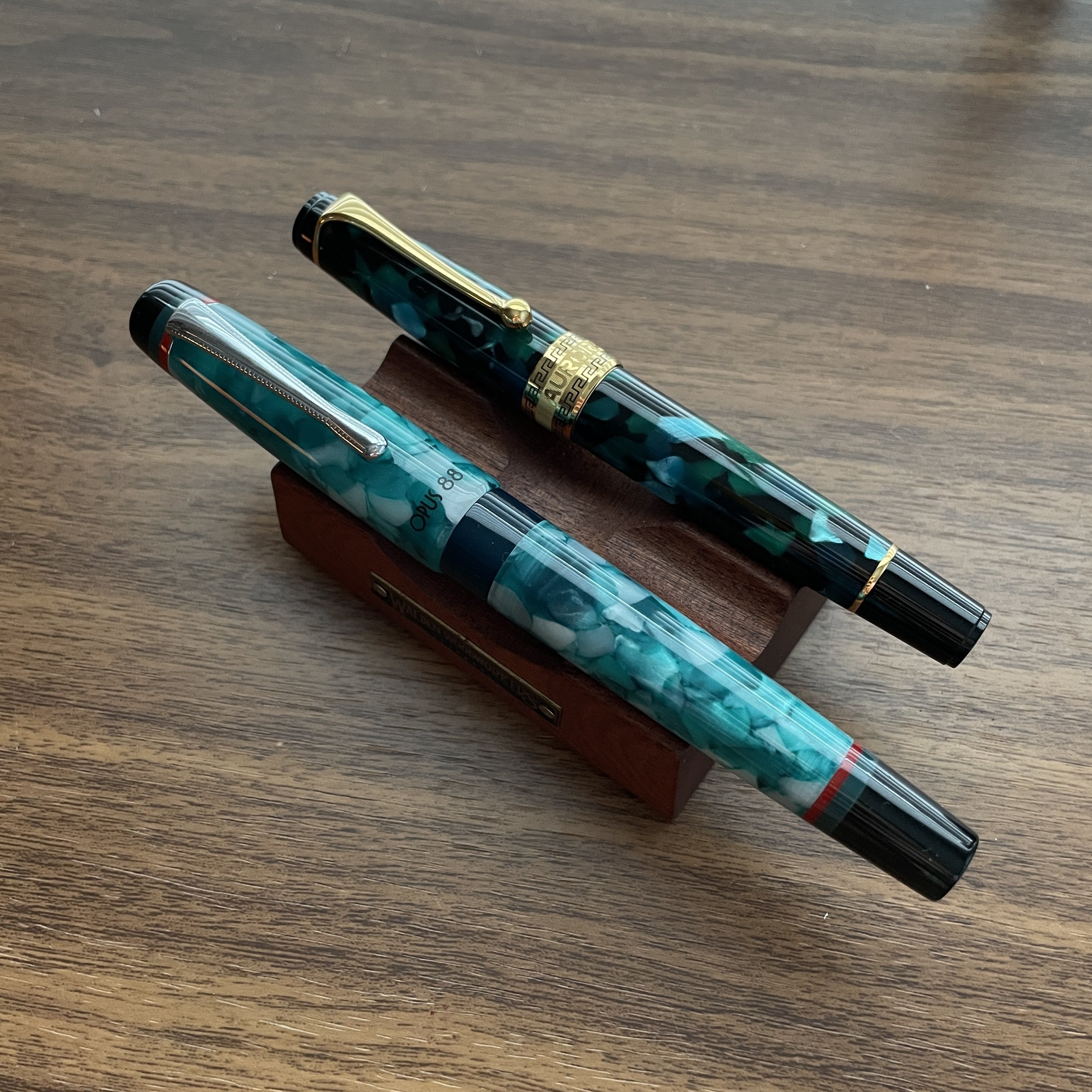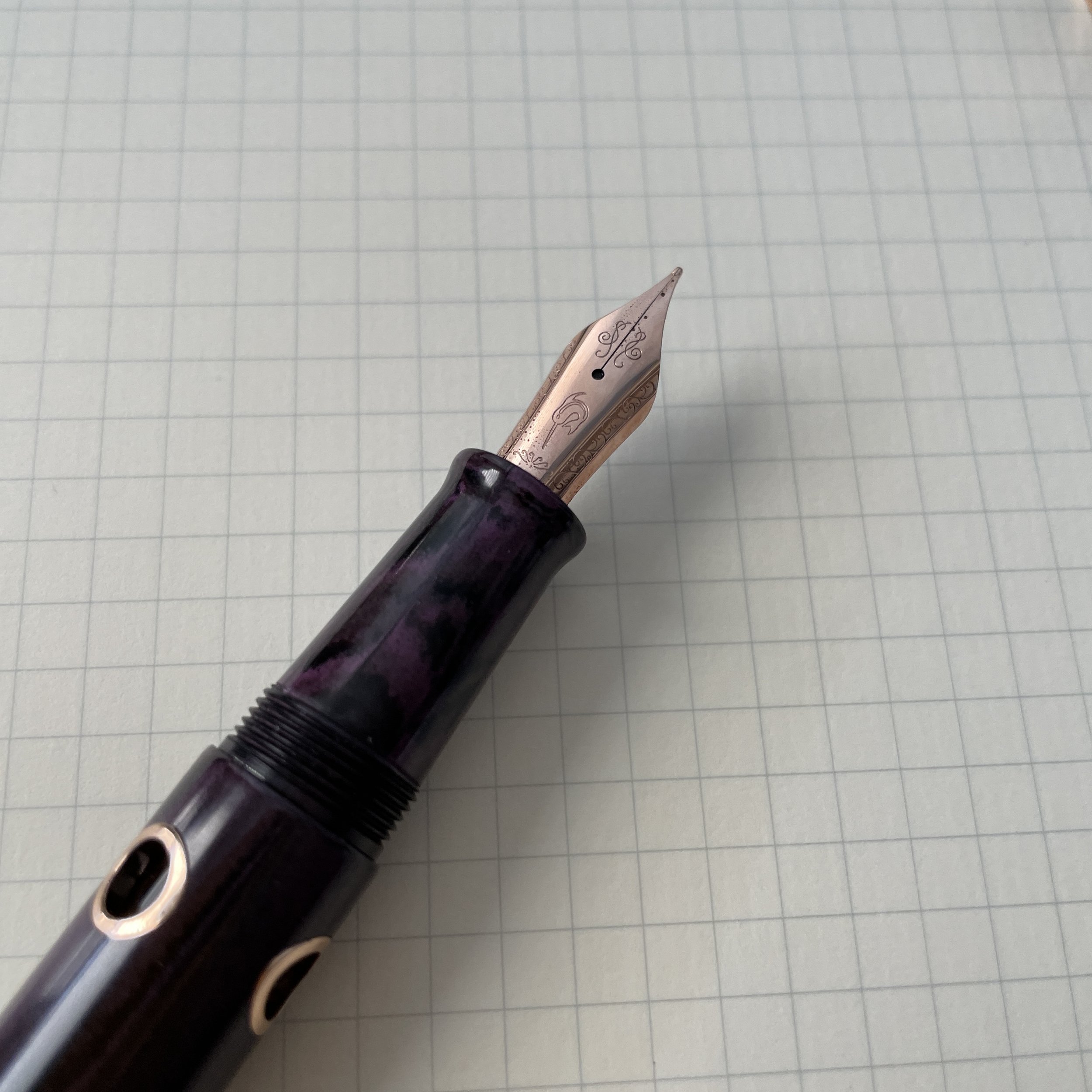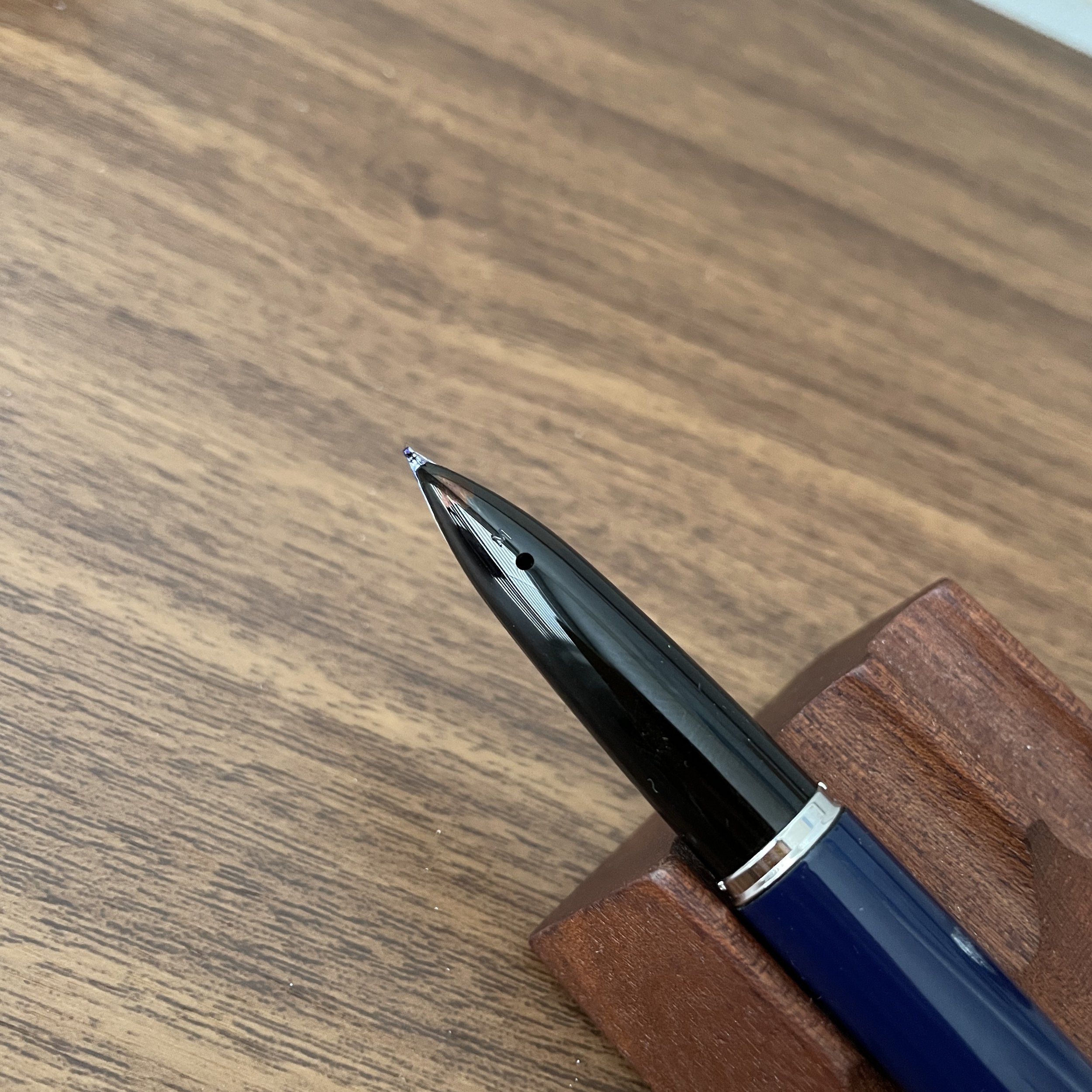Since this coming Friday is Fountain Pen Day, it’s only appropriate that both of my main posts this week be devoted to, well, fountain pens! Today’s post is less a full review than a further observation based on several years of heavy use. Back in 2016 I reviewed the Aurora Optima, on loan from my friend Thomas. While I enjoyed that pen, it was a bit out of my price range at the moment and I didn’t end up picking one up until a couple of years later, when I added the green Auroloide version pictured here. I wanted to take a moment today to remark not only on how much I have enjoyed the Optima, but in particular the shape.
Sailor Pro Gear Imperial Black (left) compared against the Aurora Optima. These two share a similar profile.
If you’ve followed the blog over the years, you likely know that I have several pen models that are personal favorites, including the Lamy 2000 and the Sailor Pro Gear. If you add the Aurora Optima and the Opus 88 Minty (a recent addition) into that mix, you’ll also notice a trend: I apparently favor a streamlined flat-top design, mostly in pens that post.
Lamy 2000 (left) vs. Aurora Optima.
Why do I like this shape so much? As with all things fountain pens, it’s largely a matter of personal preference. “Postability” plays a huge role: Most days I’m running between meetings in different offices and conference rooms, writing perched on different chairs and sometimes even on a bench in the back of a courtroom or leaning against the wall in a crowded conference room. I can’t really worry about what I’m going to do with the cap of my fountain pen.
But a lot of what I enjoy about this pen design is personal in the sense that the shape fits my hand better than nearly every other style. With both the Lamy 2000 and the Pro Gear, the pen fits my hand best posted; the Optima sits in the midrange size-wise, at a point where I can generally use it either posted or unposted; and the Opus 88 is more on the upper end of the range, where I can post it if necessary (it’s very light), but when I’m at a desk or at home I find the size perfect unposted.
The Opus 88 Minty (left) and the Aurora Optima (right)
Takeaways and Where to Buy
If I found myself in a position where I had to choose a single model of fountain pen to use forever, never purchasing another pen ever again, chances are that it would likely be one of the pens pictured here. A primary goal of my writing here at T.G.S. has been to encourage people, when making a purchasing decision, to look beyond the aesthetics of a pen or piece of stationery to how well it will work for them in everyday use. While pens like the stock Aurora Optima or Lamy 2000 may not be the most visually exciting from the perspective of today’s FOMO, limited-edition driven market, they have staying power among fountain pen aficionados for a reason: they’re well-built workhorses that will let you write comfortably, for long periods of time.
An overhead comparison of four pens with a similar classic shape.
You can purchase the Aurora Optima pictured here from most Aurora dealers, as it’s the standard green model with gold trim. I picked this one up from Dan at The Nibsmith, who doesn’t appear to have this particular color in stock at the moment, but our friends at Dromgoole’s do have it priced at $476. The Lamy 2000 and Sailor Pro Gears are also widely available at retail, generally priced at around $200 and $300-$350, respectively. For a similar look in a larger pen, you might consider the Opus 88 Minty (which we do sell directly), a Japanese-style eyedropper that not only holds a LOT of ink, but sits in at the $125 price point. I plan to review the Minty separately at a later date.
Further Reading on the Aurora Optima
I originally reviewed the Aurora Optima in Nero Perla Auroloide, and in that review I discuss most of the technical specs, etc. on that pen. I’ve also reviewed the Aurora Optima Rollerball, which features the same excellent overall shape in a rollerball format.
This post does not contain affiliate links. The Gentleman Stationer is supported entirely by purchases through the T.G.S. Curated Shop and the T.G.S. Patreon Program. The site takes a lot of time and effort to maintain, and we greatly appreciate your support if you have the opportunity to make a purchase through our online store or throw a couple of dollars our way via Patreon. Many thanks!






